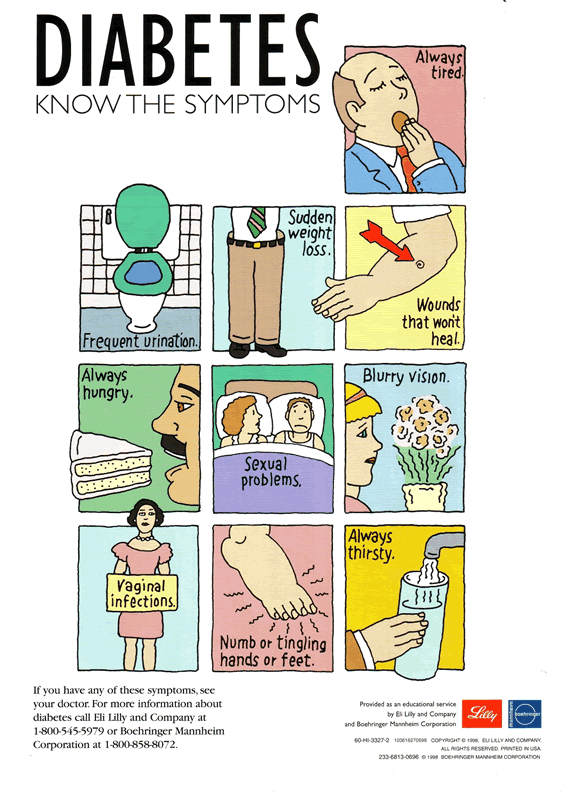Diabetes is not a disease but a syndrome, which should be individualized within the various nosological entities. The common link of all these is hyperglycemia and its consequences, also called specific complications that are common to all forms of diabetes.

Diabetes is a chronic genetic disorder characterized by three types of events:
- A metabolic syndrome consisting of hyperglycemia, glucosuria, polyphagia, polydipsia, polyuria and impaired metabolism of lipids and proteins as a result of an absolute or relative deficiency in insulin action.
- A vascular syndrome, which can be macroangiopathic and microangiopathic, which affects all organs, but especially the heart, brain and peripheral circulation, kidney and retina.
- A neuropathic syndrome, which can in turn be autonomous and peripheral.
- Diabetes is the most common endocrine disease and one of the most common diseases in clinic.
The overall prevalence is estimated at 5% in the western world, but we must distinguish the different prevalences of IDDM and NIDDM.
The NIDDM is much more common than IDDM and their frequency has increased in recent decades (greater longevity, increased obesity and physical inactivity, etc.).. There are large ethnic differences and the prevalence among Pima Indians of the United States is 40%, is also very high in individuals of black, Mexican and Indian.
The relationship NIDDM: IDDM is 3:1, although some statistics put it in 10:1. NIDDM accumulates in the affected families and has an unknown mechanism of inheritance. These two patients showed physiological defects: a) resistance to insulin action in tissues effectors and b) abnormal insulin secretion.
Treatment plans for a diabetic patient should have four objectives: To control the symptoms present, prevent or delay the onset of complications, allowing the patient to lead a full and active life and have the patient watch his illness in a professional guide appropriate.
In young patients who are also seeking to restore normal rates of growth and development, at present there is growing evidence that maintaining blood glucose levels as close as possible to normal is associated with the reversal of biochemical and other abnormalities are minor problems with the complications of diabetes. Achieve this tight control is difficult, but worth the effort required, is based on the combination of diet, drug therapy, exercise and education.
In general, the diet is raised in the diabetic patient should not be essentially different from that which we view as that of a balanced diet. The only differences arise in the adaptation of the diet due to some peculiarities of the pathophysiological characteristics of the disease or the type of treatment, as well as criteria for identification sticking to the habits and preferences of the patient. This last aspect is very important for the patient to properly follow the prescribed diet.
Even today for many patients the diet is described as dull, heavy, sad, difficult, expensive and for them represents a point of discomfort and even a deterioration in their quality of life, rather than an important element to encourage precisely the opposite.
It is clear that patient education is a fundamental aspect: the motivation, knowledge of food, wrong food habits change, the attitudes help the patient follow the type of food offered to him but if it does not fit every person, we are wasting our time.
The exercise has a positive role in each of our lives and can contribute to physical and mental health. With respect to diabetes, can help the establishment of a normal metabolic pattern, limiting the disruption of the circulatory system, making it highly desirable. They must also take into account the needs of diabetic patients whose leisure time involves physical activity. During exercise, muscle glycogen is used primarily for the supply of energy. Then, the energy is derived from plasma glucose and liver. When the exercise periods are longer fatty acids are used and the compounds citrine. It is very important to prevent exercise-induced hypoglycemia in insulin-dependent diabetics.
This can be consumed easily assimilated carbohydrate immediately before performing short periods of intense activity or decreasing the dose of insulin before and then after a year longer. In the majority of type II diabetic patients, exercise can play a complementary role of diet in reducing weight to achieve a more appropriate body weight. Additionally, there is some evidence that exercise can improve or normalize the hyperinsulinemia, high levels of cholesterol, decreased levels of HDL-cholesterol and elevated VLDL-triglycerides. Therefore, you can minimize the development atherosclerosis. The potential benefits of exercise should be balanced against the immediate risk of myocardial infarction or cardiac dysrhythmias in some patients.
Successful treatment of diabetes is impossible without the full cooperation of the patient. Of course, patients must take responsibility for their condition and should be encouraged to consider it as an inconvenience rather than as a disability. Although there may be benefits when patients know their condition in detail, the main goal of education should be to ensure that patients know how to measure their insulin dose, how and where to inject the right time for administration and other drugs, how they should vary their diet, how to measure and interpret their blood glucose levels in urine and how to recognize and correct hypoglycemia. This type of education plays an important role to give the patient confidence and achieve good control of diabetes; it should be a priority for all health professionals.